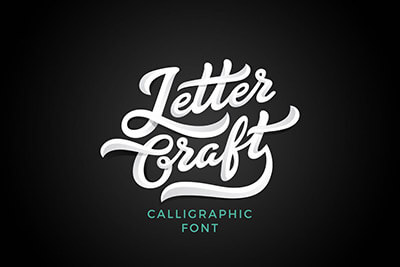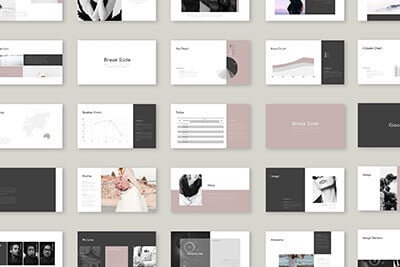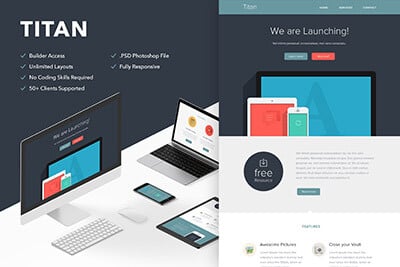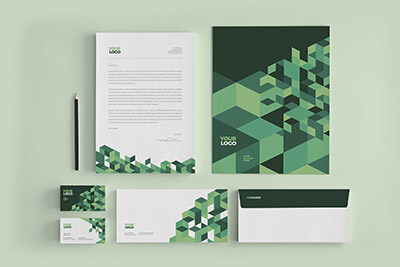Design Dilemma: Will Social Media Help Me Find Clients?
A designer wrote that he was having trouble deciding whether or not to start using social media to promote his website/client outreach. He asked about blogging, Twitter, Facebook, ads on Facebook, etc. Those are good questions, as social media often gets a bit inflated in the minds of people who think it creates miracles. It does, but only very rarely. Otherwise, it’s hard work.
Social media outreach is free, if you don’t consider the hours you need to spend casually tweeting, adding to Facebook, Google+, and the other popular social media channels. Does a designer have the same social media needs as an ecommerce business? No.
22+ Million Digital Assets, With Unlimited Downloads
Get unlimited downloads of 19+ million design resources, themes, templates, photos, graphics and more. An Envato subscription starts at $16 per month, and is the best unlimited creative subscription we've ever seen.
Every business has its own needs and desired results, so join us as we delve into another very social Design Dilemma, helping to answer your questions, queries and concerns about the murky world of design.
Dear Speider:
I’ve followed some of your articles and wanted to ask you about my social media needs to find more clients. There aren’t many businesses in my area that use web design, although I’ve built a few websites and people seem to like them but local businesses can’t afford to pay much. I need to find clients outside of my town, using, I guess, social media.
I have a Twitter account, Facebook, Instagram, and I’m on LinkedIn. Which one of these (or all) should I use to reach out to people? Who should I seek out as clients?
Sincerely,
“Sven”
Be Social With the Right People
Social media is a great thing, but people make the biggest mistakes of their careers by the wrong use of it. They chase the wrong people and waste time with useless posts (not that everyone doesn’t like a good kitten video).
There are designers who follow other designers, join social groups of other designers, and read nothing but blogs on design. As freelancers, one must seek out the clients and not waste time hoping peers are the key to finding more work. It won’t happen.
Having said that once before, a young designer got angry and said by following design studios and tweeting articles from the top design blogs, he hoped the big studios would appreciate his efforts, know his name and hire him for freelance work. I asked if that was working for him and it hadn’t “as of yet” he responded.
There are Twitter accounts that act as aggregators for niche news, but more often than not, people have their own aggregators set up for their startup homepage. There are people who feel listing their religion on their profiles is a draw for fellow believers, but what about those who don’t follow the same beliefs?
There are the accounts that are nothing but famous quotes, hoping to “inspire” others (your aggregator probably has a “quote-of-the-day” widget), and there are those whose posts are acknowledgments to followers for who-knows-what and you’ll feel like there’s a party that you weren’t invited to attend.
“Social” means making friends and contacts, and, as we know from our childhood lessons and experience, our friends are people who enjoy our company and like us for who we are. In business, our friends are those who will pay us for our professional services.
The young designer who was so focused on marketing himself to bigger design studios wasn’t completely wrong. He just didn’t diversify his targeted audience. He belonged to lots of designer groups on LinkedIn and Google+, but not to any groups where his prospective clients were. THAT is the biggest mistakes designers make when networking.
With all of that in mind, and a few more points, I replied to “Sven’s” dilemma:
Dear Sven:
Thanks for writing! I appreciate that you’ve been reading my articles and hope that you picked up some handy tips—learning from my past mistakes. ;-)
For social media, you have to narrow down what’s the most effective channel for you to dedicate time. First, you have to identify your clients. Do you want the huge corporate clients or the smaller businesses? What is the market for your design skills? Are you strictly a web designer? Chances are you won’t land the big corporate website design projects, but you can certainly capture the business of a smaller business or paying startup via social media. The channels you use should reflect your strengths. If you can write, short blog blurbs, tweeted and shared will establish you as a professional in the eyes of prospects who follow you where you post such things.
Keep in mind when posting, place it where the clients will see it. Here’s some of the strengths and weaknesses of the bigger social media channels:
No designer I know has gotten work from Facebook or Facebook ads. Save the time and effort for something else.
If you stick to showing samples of your work (via Twitpic), and explaining why it’s a special design, that will pique the interest of people who are looking for designers. Sell yourself 140 characters at a time!
Blogging
Like having a portfolio website, having a blog won’t drive traffic. You need OTHER social media channels to drive traffic to your website and blog. While a blog will give you a better search ranking, all of your SEO has to be related to you providing design services so they dominate those searches.
Only if you take pictures of your design work and tweet it or email it to prospects that have opted in to an email newsletter.
eNewsletter
This is one of my favorites because I’ve seen how effective it can be. If you can build the aforementioned email list of willing recipients, you can tell your story and explain the process behind your design projects, which is preferred by clients, as well as creative directors looking to hire freelancers. There are many email marketing services that allow you to use or build your own email template and will manage your list, added and dropped subscriptions, etc. Definitely worth trying if you are good at creating presentations!
The great thing about digital marketing is that you can immediately change what isn’t working and analytics will tell you what works and what doesn’t. Actually, clients contacting you for work will tell you what’s working.
The only thing to beware of, is social media burnout. Most people make the mistake of saying they need to be on each and every social media outlet and while that works for firms with several social media people who are paid to do nothing but, as a freelancer you only have so much time to keep it up. You MUST keep at it and post on a regular basis. No less than once a week, always on the same day—forever!
I knew one design studio that posted their “Hump Day Hip-O-Meter” every Wednesday, highlighting three cool design things (this was before BuzzFeed and sites of that ilk were around), labelled “Hip,” “Hipper,” and “Hippest.” It had over 4,000 opted-in readers and was VERY successful!
Think outside of the box when it comes to social media. Use QR codes, augmented reality, video, images, stories or whatever a client will appreciate and don’t play to your peer designers. They won’t buy anything from you.
Best,
Speider
In Conclusion
Like being a whiz at Photoshop and hearing others amazement at what you can do, learn to use all social media options and then take it to a higher, different level. Be creative with your marketing and you will stand out. That’s the name of the game with increasing competition we all face.
Send Us Your Dilemma!
Do you have a design dilemma? Speider Schneider will personally answer your questions — just send your dilemma to [email protected]
Stock Photos Courtesy of Creative Market





